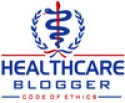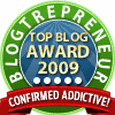doom and gloom for forward-looking healthcare organizations. In fact, it’s a massive opportunity to leapfrog competitors.
As the founder of the Institute for Healthcare Improvement, Dr. Don Berwick stated:
“The health care encounter as a face-to-face visit is a dinosaur. More exactly, it is a form of relationship of immense and irreplaceable value to a few of the people we seek to help, and these few have their access severely curtailed by the use of visits to meet the needs of many, whose needs could be better met through other kinds of encounters.”
Smart Doctors Recognize Their Inefficiency
If one were to observe a doctor for a month, you would find that doctors have their own FAQ for various conditions, diseases, prescriptions, etc. They are essentially hitting the Replay button hundreds of times a month. Smart doctors are recognizing that there is a better way. The patient and family benefits greatly when the doctor has a mini package of curated content (video, articles, etc.) that is developed for the patients. This is predominantly a manual process today (e.g., writing down web addresses in an appointment or emailing them afterwards).
Modern Patient Relationship Management systems automate the content creation/curation process and allow patients to digest the content on their terms. For example, many patients are embarrassed to ask the doctor to repeat something they didn’t understand so they walk away confused. This has been a boon to health information sites such as WebMD — patients fill gaps of information by going to “Dr. Google“. Most clinicians realize that communications is the most important “medical instrument” yet time pressures don’t allow them to spend a great deal of time with patients. Thus, they must come up with other ways to enable effective communications. Like Salman Khan’s experience, doctors realize that an asynchronous communication method can often be the most effective way to convey unfamiliar material.
Doctors’ Success Hinges on Transactor to Teacher Transition
The health professionals who will gain an edge will return to the roots of medicine. The etymology behind the word “doctor” was derived from the word ‘doctoris’ that means teacher in Latin and is an agent noun derived from the verb docere which means to teach. The doctors who are the best teachers are most likely to guide their patients to the best outcomes.
The old incentives have driven doctors to a transactional model as the systems
reward moving patients through as many transactions (tests, procedures, appointments, etc.) as possible. 75% of healthcare spend is directed towards chronic disease and the decisions that most influence outcomes are made my patients (or their families). Health professionals who were rewarded for repeat patient visits in the past will be penalized in the future for that same thing.
Imagine if you sent your children to a school and you found out that 80-90% of the students were failing. You’d yank your kids out of that school in a heartbeat. Now imagine we’re talking about healthcare. It becomes clear why health professionals will need to become effective teachers once again. Doctors already naturally do this today, however the evidence would suggest that it is inefficient and largely ineffective if 80+% of what a patient is told is forgotten.
Medicine Can Learn from Bill Gates’ Favorite Teacher
From millions of students and parents to Bill Gates, the Khan Academy has impressed
many and inspired some teachers to flip the classroom lecture/homework model on its head as described in the video below. Doctors are now recognizing similar value in videos for their patients.
Technology has brought a human element back into the classroom making it more interactive and tuned to specific kids’ needs. Why limit this to students? Why not use this model to help improve health outcomes? In fact, we may not have a choice with the ever-increasing shortage of primary care physicians. One can look to what happened after Romneycare was implemented as a preview of what is to come with Obamacare since it’s a virtual carbon copy. The shortage of primary care providers greatly increased. Simply trying to put primary care physicians on a faster hamster wheel isn’t the solution. In fact, that is part of the problem.
One of the nice things about Khan Academy is learners with different skill levels can watch the videos in different ways. Some may get it just watching it once while others may want to replay the video over a few times before a concept sinks in.
Doctors as Teachers
There are many examples of doctors already taking steps in this direction. Even before financial incentives fully take hold, these passionate doctors want the best possible outcomes for their patients. In the process, they are also getting the residual benefit of marketing since some of these doctors get 20% of their new patients from social media and videos such as these.
Perhaps because Dr. Wendy Sue Swanson was a teacher before she was a pediatrician, she was naturally drawn to using videos and blogs to benefit her patients’ families. Dr. Swanson shared the reaction she gets from patients. “I’ll launch into something in clinic and a family will say, ‘Dr Swanson, you don’t have to explain that, I read your blog post/saw your video, etc!’ We start at a different place. A place that feels easier to connect, more informed, and one with more respect for our mutual vantage points.”
Dr. Ryan Neuhofel explains the Hemoglobin A1c lab test and why it is so important when monitoring diabetes. “Dr. Neu” as he likes to be called is part of a rapidly growing innovative model of primary care that has been given rocket fuel by a clause in Obamacare.
Dr. Natasha Burgert has written about how social media has changed her medical
practice. Here is how she describe the benefit to her practice and patients.
Investing time in relevant and complete posts actually saves me time in the long run. Questions I am repeatedly asked, like “How do I start solid foods?“, can be answered quickly and completely by directing them to my site. This saves face-to-face clinic time for more specific concerns for their child. I can actively communicate, acknowledge, and positively influence the choices that my families make for their children between the checkups. My anticipatory guidance can be repeated, reinforced, and repeated again.
Dr. Burgert was recently interviewed by Dr. Mike Sevilla on his Family Medicine Rocks podcast. She shared how even though her practice still operates with paper-based records, they are using social media tools to help inform their patients. Dr. Burgert was also on CBS Morning News sharing how her social media activity is impacting her patients.
Of course, the benefit of doctor videos aren’t limited to primary care. Specialists such as Orthopedic Surgeon, Howards Luks, also have been realizing the benefit of videos. As Dr. Luks states, “Every patient who sees my videos prior to their visit says. ‘OMG it’s you, you’re just like you are in the videos.’ Very powerful. It humanizes your practice.” The video below is an example of Dr. Luks’ video explaining Achilles tendon ruptures.
Bit by bit, there is major change underway. Many doctors, particularly in primary care, are unhappy about the way they have been practicing and are unleashing their own creativity. Here is how one describes how these current delivery model changes:
So much of our present care delivery is rote and could be practiced online or provided via video/blog/text. And that the ‘real medicine,’ the service and the relationship or helping people in moments of anxiety and indecision are rare and undervalued. That oddly enough, there is simply no time in the day to do what matters most. Or if we get the opportunity to forge a real partnership, it comes at the cost of making somebody wait, and running late. So yes, we’re headed in the right direction by making these changes.
Naturally, startups are building from this foundation and innovating beyond simply using YouTube. For example, clear.md has made it easy for doctors to create repackaged video. As Salman Khan has shown, it doesn’t necessarily take radical new technology to reinvent or re-imagine change. Rather, it is imperative to make creative use of existing technologies in order to thrive in the future.

 RSS Feed
RSS Feed































